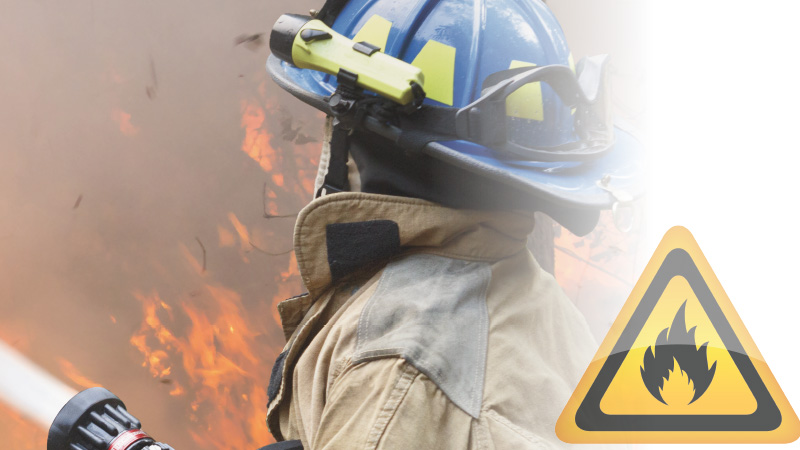SK WCB Reports a Decrease in Total Injury Rate and Loss of Time Claims in 2023
On May 14, the Saskatchewan Workers’ Compensation Board (SK WCB) shared its 2023 results at its virtual annual general meeting. This data included an overview of the organization’s financial, strategic, and operating highlights, including 2023 workplace injury and fatality statistics.
Of these highlights, the most interesting included the following statements:
• Saskatchewan’s workplace total injury rate decreased to 3.95 per 100 workers, which is the lowest in Saskatchewan’s history. That represents an 8.78% decrease from the 2022 Total injury rate of 4.33 per 100 workers.
• Saskatchewan’s time loss injury rate decreased to 1.78 per 100 workers, compared to the 2022 rate of 2.04 injuries per 100 workers.
• In 2023, 90% of Saskatchewan workplaces reported zero injuries or fatalities for the fourth consecutive year.
• The WCB remains fully funded, with a sufficiency ratio of 135.7%.
“We are committed to maintaining a strong and stable funding position,” said Phillip Germain, CEO at SK WCB. “By doing so, we let workers and employers know their needs will be met, while also ensuring stable funding for programs and services that help us meet our vision of eliminating injuries and restoring abilities. That way, workers and employers know the WCB will be there for them when they need us.”
For more information on these results, the WCB’s 2023 annual report is available online at www.wcbsask.com.
GOVERNMENT OF ONTARIO Aims to Strengthen Protections for Wildland Firefighters; Union Says It’s Not Enough
On April 29, the Ontario Government announced that it will soon introduce legislation that, if passed, will ensure wildland firefighters and investigators have the same presumptive Workplace Safety and Insurance Board of Ontario (WSIB) coverage for cancers, heart injuries, and post-traumatic stress disorder (PTSD) that municipal firefighters do.
Additionally, the Province is proposing to expand presumptive coverage to firefighters and fire investigators for skin cancer and lower the service time required for firefighters to receive compensation from 15 to 10 years, bringing Ontario to the lowest required duration of service in the country. With presumptive coverage, certain cancers, heart injuries, and PTSD diagnoses are presumed to be work-related, helping ensure quicker and easier access to WSIB benefits.
“In every corner of our province, firefighters, fire investigators, and volunteers put their lives on the line to keep our families and communities safe. These frontline heroes deserve a government that values their service and sacrifice – they have earned stronger, more expansive coverage,” said David Piccini, Minister of Labour, Immigration, Training and Skills Development. “Our government is serving those who serve by expanding cancer coverage and ensuring wildland firefighters have the same health coverages that municipal firefighters do. This builds on the progress we’ve made in our previous Working for Workers legislation, and we will continue to work with the firefighting community as part of our long-term plan to safeguard the health and safety of our frontline heroes.”
The government is proposing changes to the Workplace Safety and Insurance Act (WSIA), which would reduce the duration of employment requirement for entitlement to presumptive coverage for primary-site skin cancer from 15 years to 10, making it faster and easier for firefighters to access benefits. Growing scientific evidence shows that firefighters, including wildland firefighters, are at an increased risk of developing skin cancer because of their exposure to carcinogens and polycyclic aromatic hydrocarbons (PAHs) found in fireground dust.
“For years, forest firefighters have fought to be recognized and included in legislation which recognizes our sacrifice,” said Noah Freedman, Local 703 Vice-President of the Ontario Public Service Employees Union (OPSEU/SEFPO), in a responding press release. “Without the relentless determination of forest fire workers from across the province of Ontario, we would not be receiving this news today. The fight is not over and there is still work to do to. But for all those who have sacrificed their health and their lives, and those who continue to, we can at least celebrate the promise of change. Now it’s up to this government to implement this change immediately.”
Though these changes are increasing protections, the union states that experienced forest firefighters are leaving Ontario’s wildland firefighting program for higher paying jobs elsewhere due to the low wages and the high-risk nature of the job. Forest firefighters spend 16-hour days, week after week, isolated from loved ones,
inhaling carcinogenic emissions to keep Ontario residents and communities safe.
OPSEU/SEFPO urges the Province to also address the retention crisis within wildland firefighting, before it is too late. According to the union, Ontario was down 50 crews last year and the effects of that were felt all over the province with runaway fires and smoke blanketing Ontario cities.
“The WSIB coverage change is an important step to recognizing the dangerous work that forest firefighters do. But to ensure people of Ontario are not also unnecessarily exposed to smoke this coming summer, we urgently need to address the retention crisis in AFFES by increasing wages,” added JP Hornick, President of OPSEU/SEFPO.
“This government’s own findings indicate that this year’s wildfire season is shaping up to be more dangerous than last year’s record-breaking season and yet the Ford government refuses to reclassify workers to address the crisis. They would rather gamble with our safety than pay forest firefighters a fair wage that reflects the risks they take.”
CCOHS Releases Free Resources to Help Address Substance Use in the Trades
The Canadian Centre for Occupational Health and Safety (CCOHS) has launched a suite of free resources in partnership with the Canadian Apprenticeship Forum (CAF-FCA) to help employers in Canada create awareness about substance use and reducing stigma.
The free resources are a result of the key findings in a 2023 research study commissioned by the CAF-FCA called Understanding Substance Use Among Apprentices in the Skilled Trades. The purpose of the study was to better understand the lived experiences of apprentices and tradespeople.
The resulting online courses, Substance Use in the Trades: Being Aware, Harm Reduction, and Supporting Your Well-being, aim to help raise awareness about the impacts of stigma and the importance of a safe and supportive workplace. The courses explore how workplaces can take a harm reduction approach to substance use, what to do if there are concerns about substance use in the workplace, and strategies to improve everyone’s overall well-being.
The Substance Use at Work Info Sheets provide an overview of substance use in the trades, from addressing stigma, to the responsibilities of employers in challenging stigma and reducing impairment, to strategies for supporting tradespeople.
More information about impairment can be found on www.ccohs.ca.
WSN Releases New Hazard Alert Regarding Power Tool Batteries
In February, Workplace Safety North (WSN) and the Ministry of Labour, Immigration, Training and Skills Development released a new hazard alert due to worrying trends in Ontario mining operations – fires resulting from power tool batteries, especially the lithium-ion type.
It is important for workers to understand the risks in their workplace. In this case, WSN states that the surge is mainly caused by ‘thermal runaway’ in lithium-ion batteries. Thermal runaways are characterized by a rapid increase in temperature and subsequent internal short-circuiting, and poses a high risk of battery failure, explosions, and the release of harmful gases.
Thermal runaway can also quickly lead to big problems like fires or even explosions. Factors like charging the battery too much, hitting it hard, or exposing it to extreme heat can start this dangerous chain reaction, leading to a fire in an underground mine.
Incidents show how critical following strict safety protocols when handling battery-powered equipment, especially in higher-risk environment like underground mines. The press release urges those handling power tools to:
1. Use the tools safely.
2. Keep and eye on the tools.
3. Store and move the batteries carefully.
4. Get rid of batteries correctly.
WSN and the Ministry urge mining companies to share this critical information with all staff and provide necessary training to ensure compliance with safety guidelines, which may effectively reduce the risks associated with power tool batteries and make mining workplaces safer.


 1-866-985-9780
1-866-985-9780








